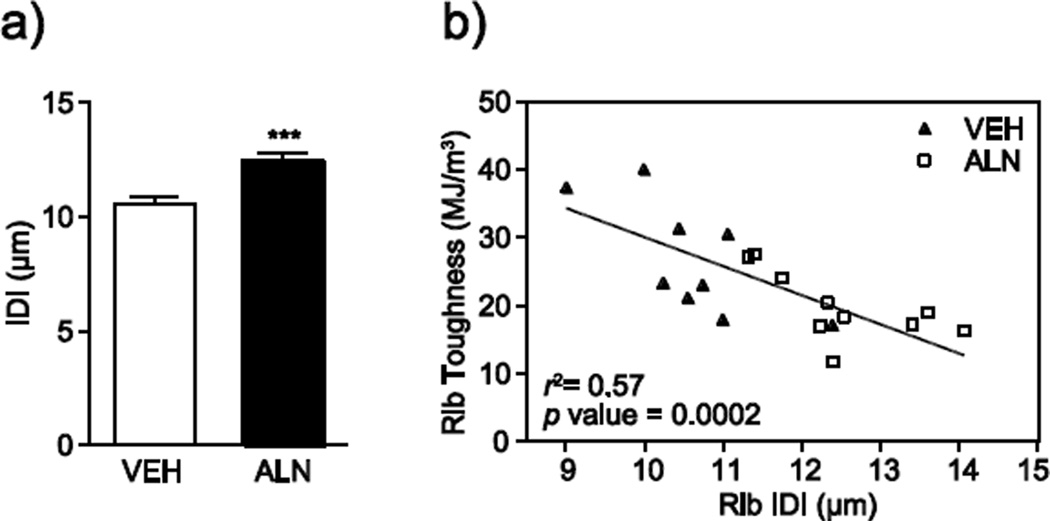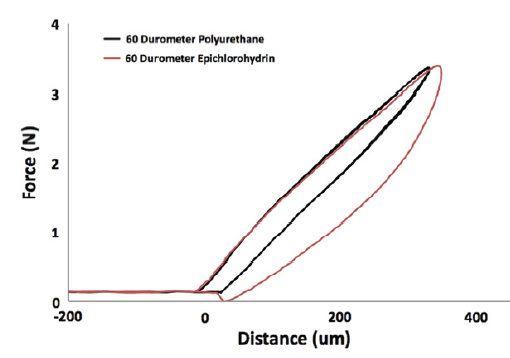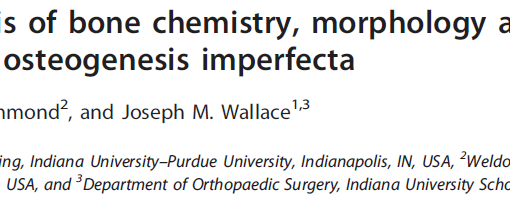Abstract
Traditional bone mechanical testing techniques require excised bone and destructive sample preparation. Recently, a cyclic-microindentation technique, reference-point indentation (RPI), was described that allows bone to be tested in a clinical setting, permitting the analysis of changes to bone material properties over time. Because this is a new technique, it has not been clear how the measurements generated by RPI are related to the material properties of bone measured by standard techniques. In this paper, we describe our experience with the RPI technique, and correlate the results obtained by RPI with those of traditional mechanical testing, namely 3-point bending and axial compression. Using different animal models, we report that apparent bone material toughness obtained from 3-point bending and axial compression is inversely correlated with the indentation distance increase (IDI) obtained from RPI with r(2) values ranging from 0.50 to 0.57. We also show that conditions or treatments previously shown to cause differences in toughness, including diabetes and bisphosphonate treatment, had significantly different IDI values compared to controls. Collectively these results provide a starting point for understanding how RPI relates to traditional mechanical testing results.
https://www.ncbi.nlm.nih.gov/pubmed/23274349
Bone. 2013 Mar;53(1):301-5. doi: 10.1016/j.bone.2012.12.015. Epub 2012 Dec 27.





